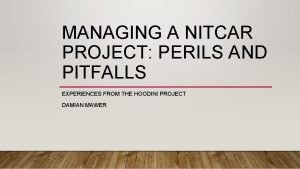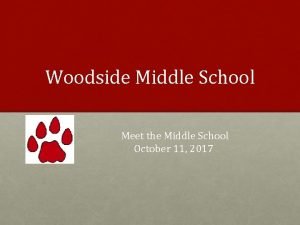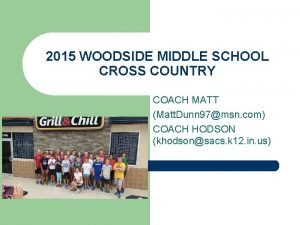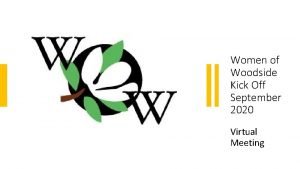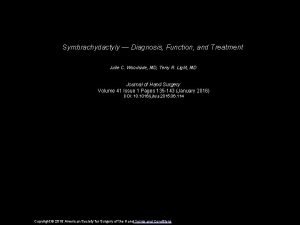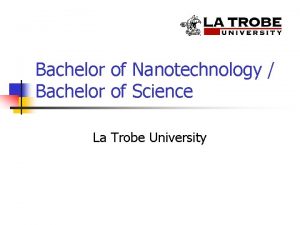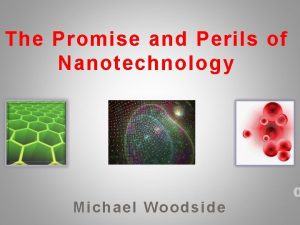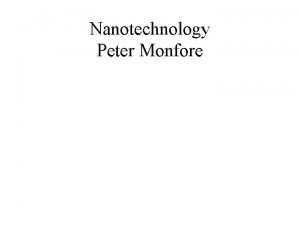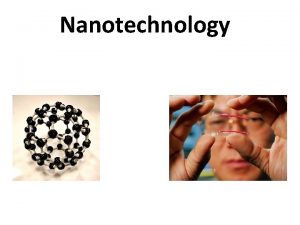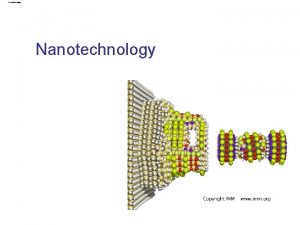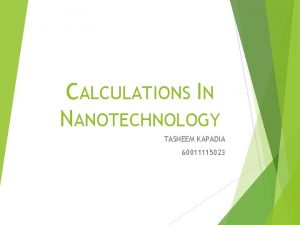The Promise and Perils of Nanotechnology Michael Woodside






- Slides: 6

The Promise and Perils of Nanotechnology Michael Woodside

Physics and Nanotechnology: A New Collaboration Most ordinary folk do not know what nanotech does yet it can have very powerful impact on our lives. One easy definition is: Nanotechnology is the science of building machines at a subatomic level Michael takes us several steps beyond that and applies principles developed in Physics to solve issues at the microlevel.

Prof. Woodside Field: Small is Big Tiny devices, no bigger than a red blood cell, can deliver big payloads. At such sizes materials have different chemical and physical characteristics. At this size, quantum mechanics is more important. For example, carbon atoms can conduct electricity and are stronger than steel when woven into hollow microscopic threads.

Dr. Woodside is in the Department of Physics but also is in the National Institute for Nanotechnology at the University of Alberta One current interest: Studying biological molecules’ response to mechanical forces, to understand structure formation in biomolecules.

Medicine and Nanotechnology A Few Important Potentials: Drug Delivery-Direct to Cancer, thus minimizing side effects and damage to other bodily systems Medical Therapy-Absorption of free radicals much more rapidly than our body’s own proteins Nano-robots- Specially designed to move internally in ways not before possible…i. e. the brain to ‘fry’ tumors

A Taste of his Research: "Direct observation of multiple misfolding pathways in a single prion protein molecule. " H. Yu, X. Liu, K. Neupane, A. N. Gupta, A. M. Brigley, A. Solanki, I. Sosova, M. T. Woodside, Proc. Natl. Acad. Sci. USA 109, 5283 -5288 (2012).
